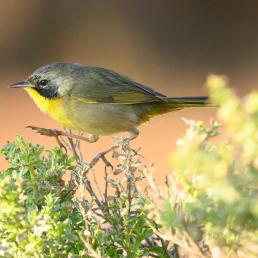

Join BirdNote tomorrow, November 30th!
Illustrator David Sibley and actor H. Jon Benjamin will face off in the bird illustration battle of the century during BirdNote's Year-end Celebration and Auction!
Artist Debra Ramsay's “Migrations” project puts her artwork in service of improving the plight of birds everywhere. For each piece in this collection, she created an abstract design from the three main colors of each bird, using species seen in New York’s Central Park as inspiration. Ramsay layers colors into thick plexiglass panels, so the paintings appear to change when seen from different angles, making each piece an interactive experience.
This blog is an extension of the BirdNote Daily episode featuring Ramsay and her "Migrations" project, "Creating Abstract Paintings of Migratory Birds" and offers an in-depth look at more pieces and the process that went into the "Migrations" project.
About "Migrations"
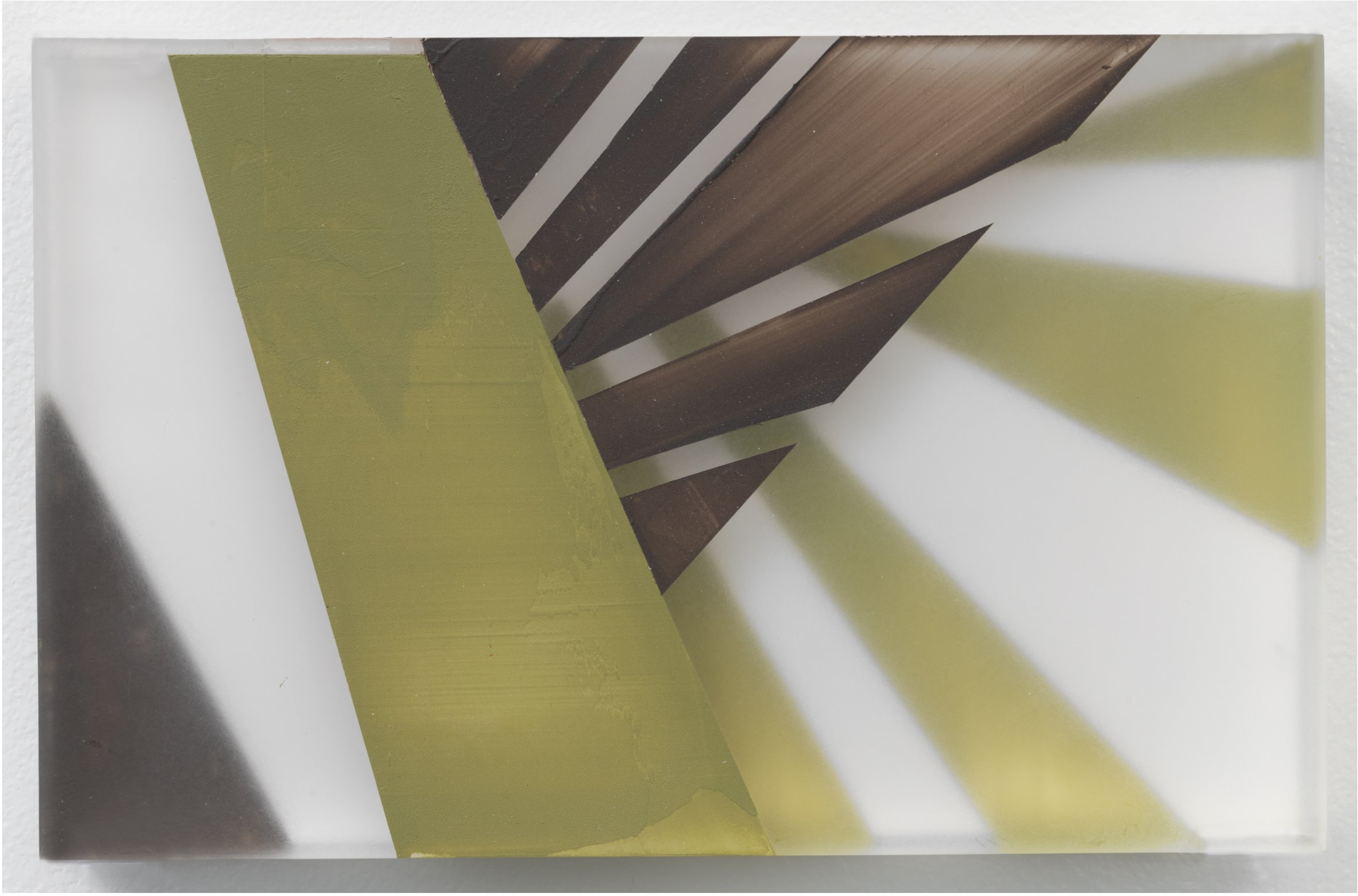
With abstract representation of her bird subjects, rather than realism, the work points beyond itself, opening the viewer to a memory they carry of their experience with that bird. The viewer becomes a participant in this work also through movement. When the viewer walks past the paintings, they can see colors that are not visible from a direct frontal view. Ramsay built the artwork this way to reflect the actual act of birding, where the viewer sees colors revealed as the bird changes position.
"I’ve joined birding groups, to observe birds in nature, but most of my bird research is done online," Ramsay said. "I watch videos of how they move, listen to their calls and songs." She's interested in knowing where they nest, food sources and migratory patterns. All of this information somehow, in an alchemical way, informs what the paintings look like. Each painting is an homage to that bird.
The Yellow Warbler series (1-4)
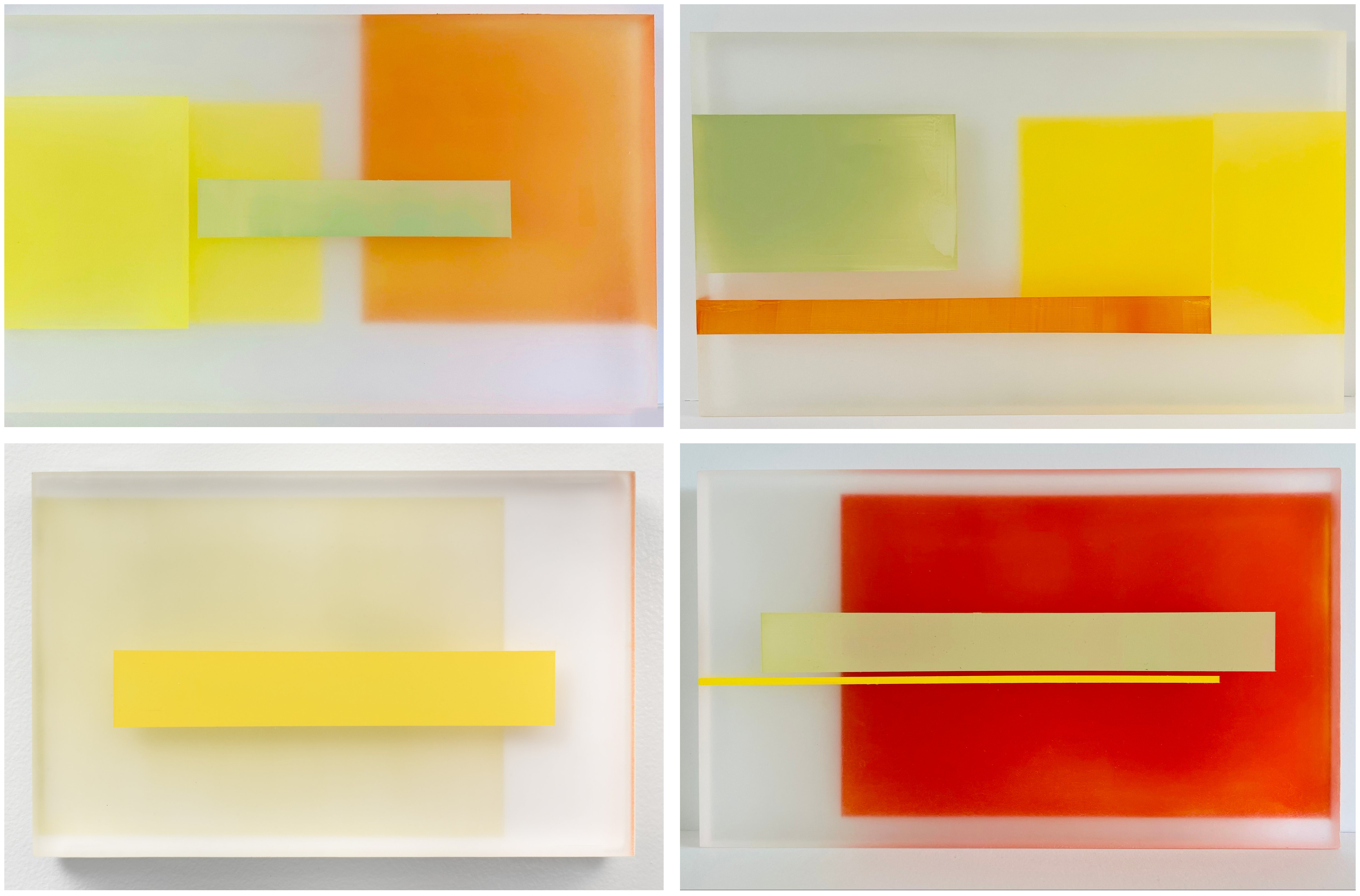
These are the earliest paintings in the series. Her initial intent, continuing an ongoing artistic interest, was to document time itself by documenting something changing. The idea of migrating birds moving through a fixed location provided the information she needed. Ramsay noted, "with the aid of color mixing software to accurately create Yellow Warbler plumage colors, I used the colors in differing proportions, suggesting the possible first color sensation a birder might experience when initially seeing a Yellow Warbler."
As the series continued, she found sources of information such as BirdNote, eBird, All About Birds, along with several podcasts that increased her awareness of each species and the challenges facing these species. "The project became more than a timekeeping exploration, I felt connected to the birds themselves and a desire to advocate for them," she expressed.
Cerulean Warblers: Male and Female
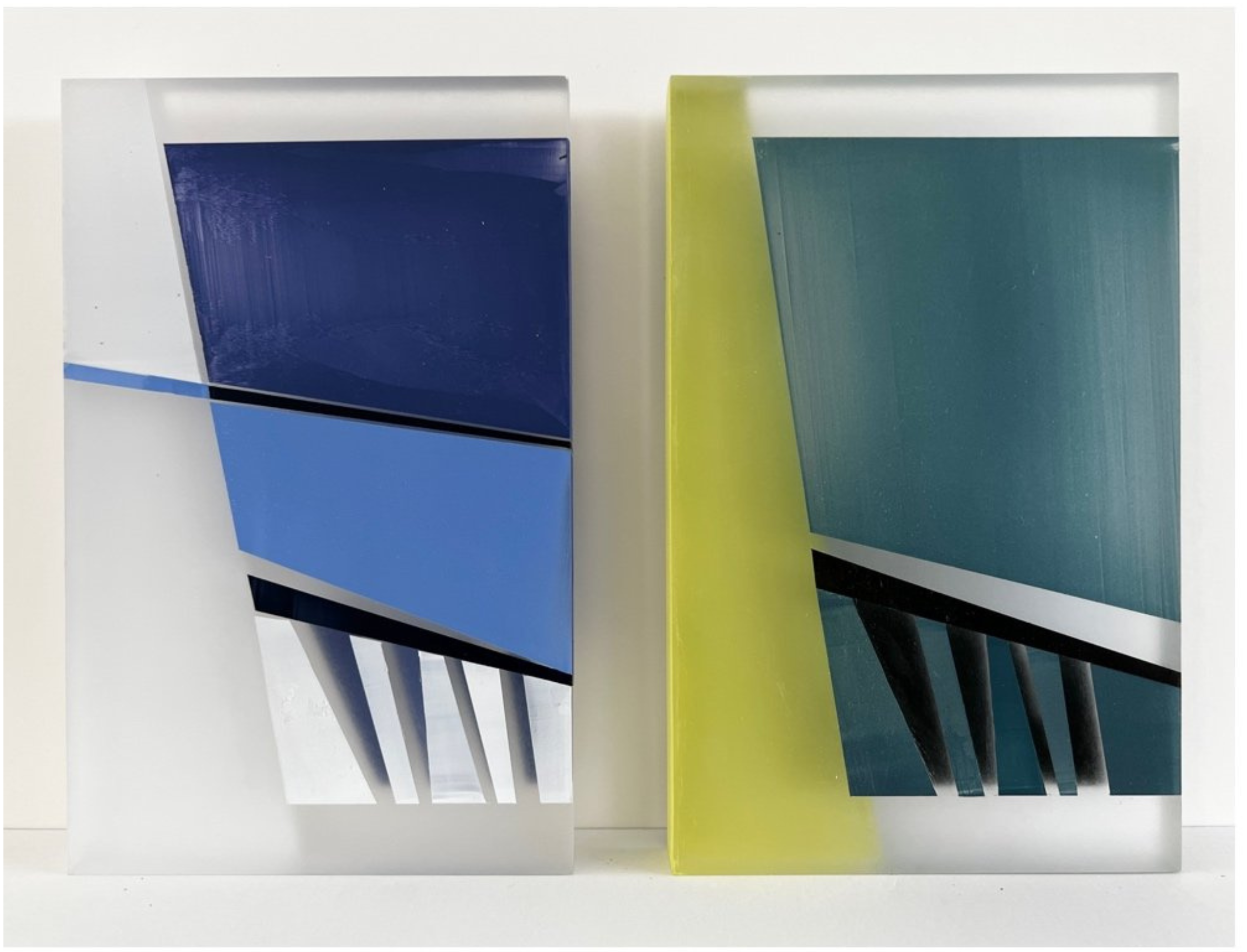
Along the way, Ramsay learned there wasn’t an equal representation of female species in field guides, the more vivid male plumage seemed to get more notice. The Cerulean Warbler pair is one of her responses to that. "While the female plumage is less vibrant and has lower contrast and the markings are slightly less complex (lack of neck band) on her own, she is beautiful," Ramsay said.
The Red-Winged Blackbird
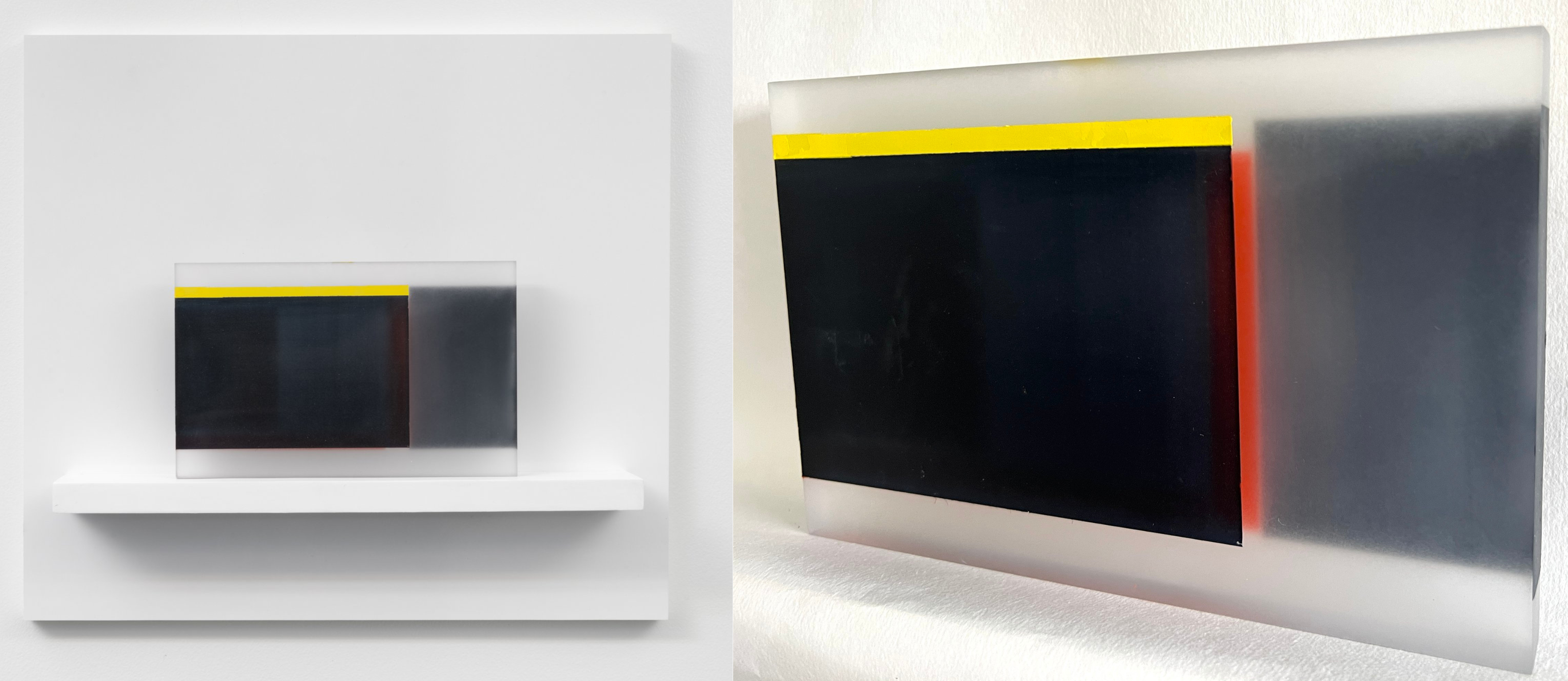
Red-Winged Blackbird is an example of an interactive painting. The viewer must pass by the painting to reveal the red coloration the Blackbird wears as an epaulet on the top of its wing. She selected cast acrylic panels at ¾ inch thickness to paint on because it allowed her to layer paint and bury one color behind another for the viewer to find. The color has a way of radiating through the panel creating a glow.
Great Egret
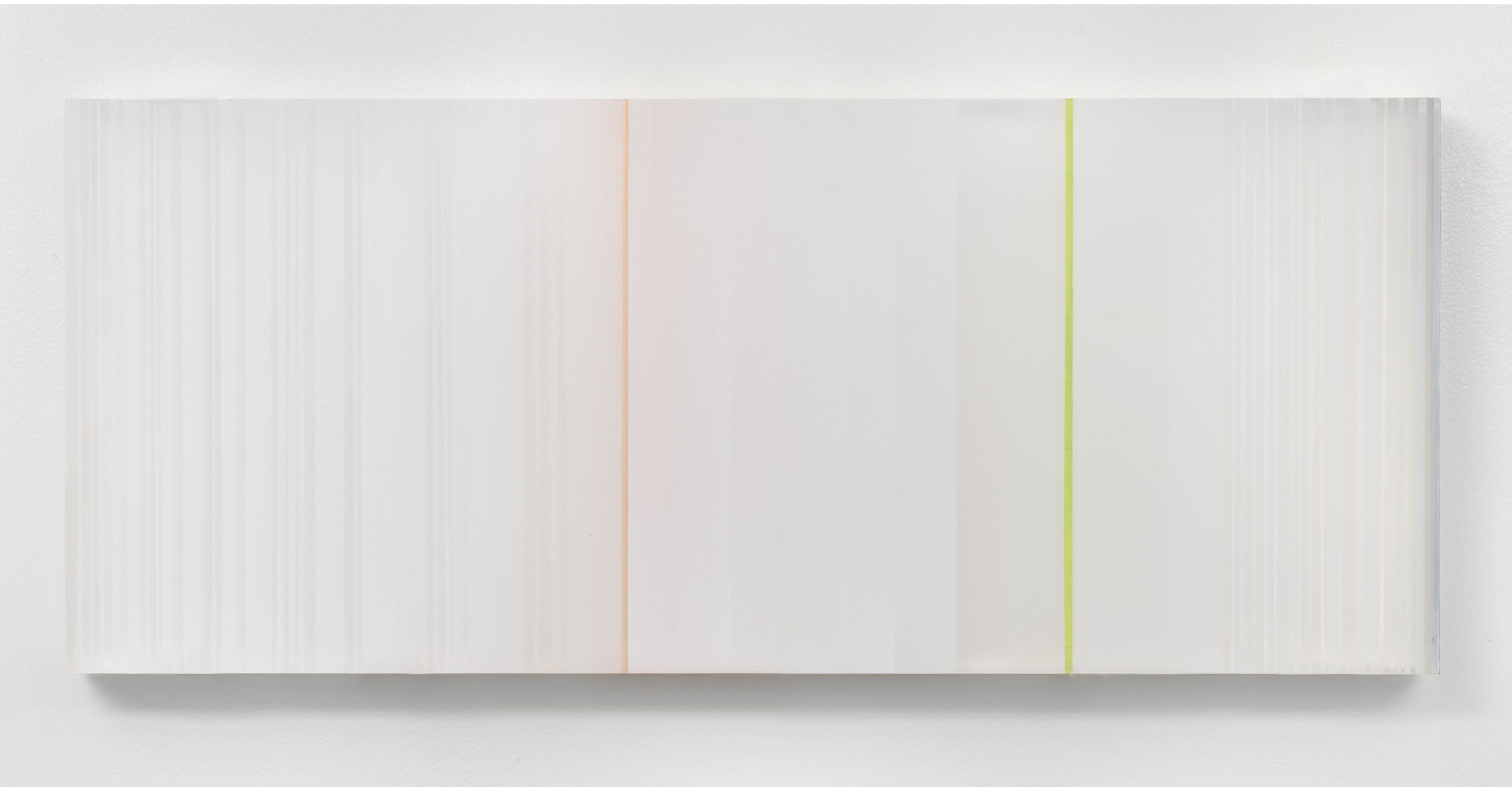
An example of the “glow” is found in the Great Egret painting. "I focused on the breeding coloration of this species, where both males and females have a wonderful fluorescent lime green color around their eyes," Ramsay explained. The green glows a bit in this painting amongst the many thin bands of white that suggest the stunning aigrette plumes they have during breeding season.
Migration of Warblers
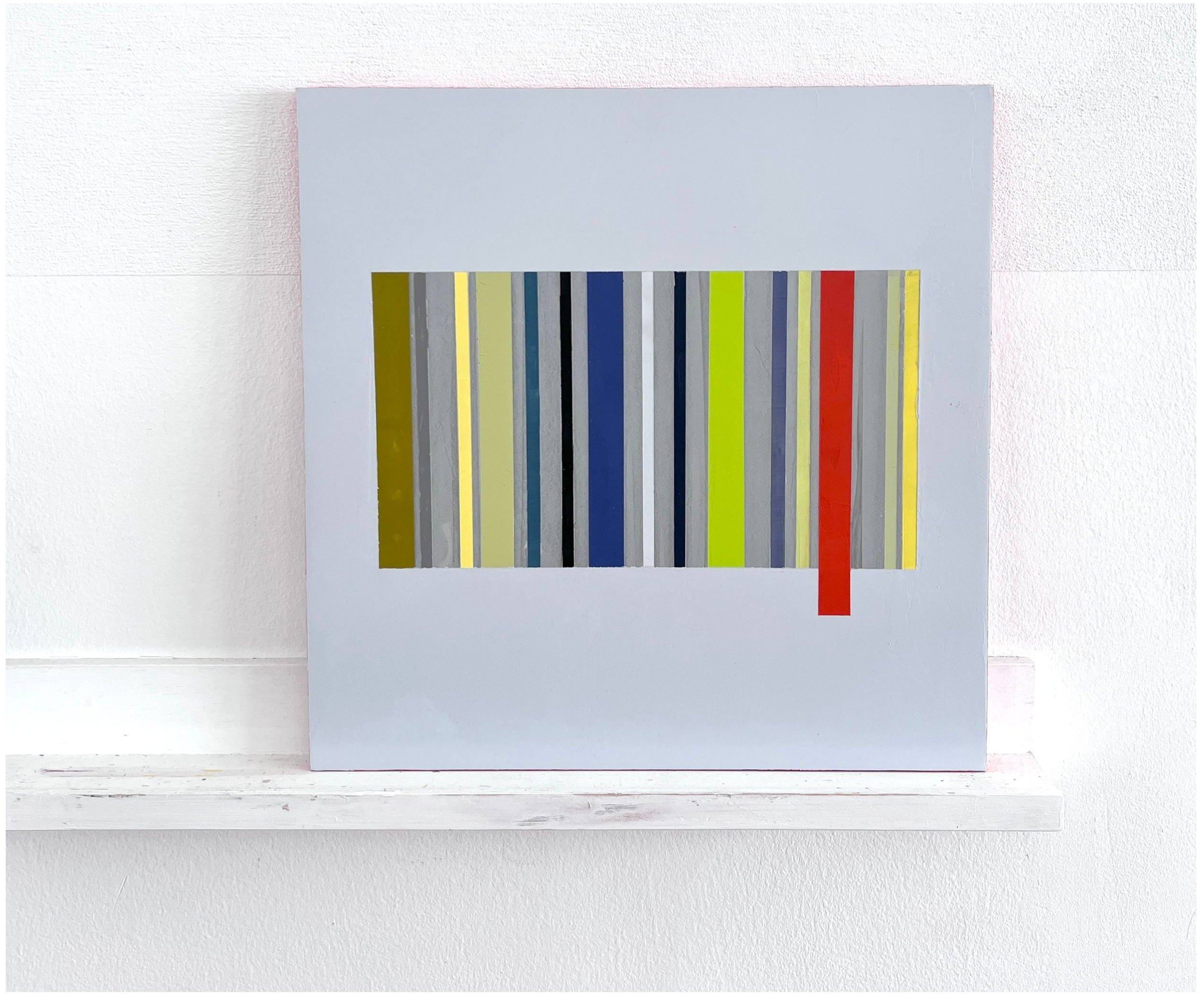
Migration of Warblers, 5 Species uses the color palette from the Warblers Ramsay documented in a more formal way. She explained, "I am curious about the evolutionary forces that steep within this unique palette of color combinations, even though I do not understand them." Ramsay continued, "as an artist, my attempt to make sense of them on my terms was to place them side-by-side to watch the color interactions they create, called simultaneous contrast."
The theory is that one color can change how we perceive the tone and hue of another when the two are placed side by side. The actual colors themselves don’t change, but we see them as altered.
About Debra Ramsay
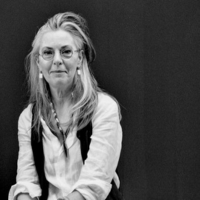
Debra Ramsay is an artist working in the disciplines of painting, drawing, and installation. She maintains a full-time studio practice in New York City. Ramsay has exhibited her work internationally for over three decades, including in Denmark, Italy, the United Kingdom, the United States, and Australia. In 2020, Ramsay was the featured visual artist in The Cincinnati Review.
Ramsay's upcoming exhibition, Circumstance of Air, will run through March 17, 2024 at Starr Suites in Brooklyn, NY and Flying Colors, a solo exhibition at the Hunterdon Museum of Art in Clinton, NJ will run from May-September. The Center for Humans and Nature Press will digitally publish Ramsay’s "The Nature of Time, One Year of Bird Migrations" in the spring of 2024.
